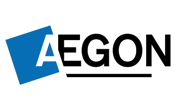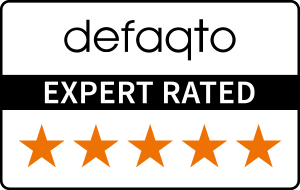Who Are Aegon?
Founded as Scottish Equitable over 190 years ago. Today, Aegon is one of the largest providers of workplace pensions in the UK.
![Defaqto 5 Star Rating]()
It aims to provide a highly comprehensive range of workplace solutions. Currently it supports over 10,000 employer schemes and manages the savings of around 900,000 individuals. Aegon’s Target Plan Group Personal Pension and Workplace ARC SIPP have both been rated 5 stars by Defaqto.
Aegon Workplace Pension Overview
Aegon’s workplace pension is regulated by The Pension Regulator. It gives employers an easy way to set up a defined contribution pension scheme for their staff.
Like other pension providers, Aegon is a Master Trust. This means multiple employers can use the scheme simultaneously, rather than just one.
While savings are separate, the governance, trustees and regulatory responsibility are centralised. This helps to reduce costs and make the process of setting up a workplace pension easier.
Who Might Need An Aegon Workplace Pension?
Employers of all sizes, industries, and complexities can use an Aegon workplace pension. But there is no one size fits all approach, so before choosing a scheme it’s important to consider:
- How much does it charge in fees compared to other providers?
- What initial and ongoing support does it offer?
- Does it offer a comprehensive range of pension funds?
How Does The Aegon Workplace Pension Scheme Work?
As mentioned above, the Aegon Master Trust offers a defined contribution pension scheme. Employers and employees make monthly contributions into a pension pot to save for the worker’s retirement.
These savings are subject to tax relief from the government. All contributions are invested through the Aegon scheme to help them grow over time. In some cases, employees can choose where their pension contributions are invested.
But oftentimes the employer may have chosen a specific default fund. The aim is for an employee’s pension to cautiously grow over time and provide them with a substantial sum for retirement.
Most employees are auto-enrolled in a pension scheme by their employer when they start employment. The employee, their employer, and the government then contribute to the workplace pension.
What Are Aegon’s Workplace Pension Charges?
An Aegon workplace pension has two key fees that contribute to the scheme’s total annual charge. These charges are:
- Service charge
This covers the administration cost of an Aegon workplace pension
- Investment charge
This is included in the overall fund price and based on the assets invested in.
How Much Can Be Paid Into An Aegon Workplace Pension?
The government set a minimum contribution amount for employers and employers to pay. We have set these out below, but if either would like to pay more than the legal amount, this is possible.
Employee Contributions
Employees must pay a minimum of 5% of their qualifying earnings into their pension. Qualifying earnings include salary, wages, bonuses, and commission before tax.
They pay less tax and National Insurance as contributions are from their gross pay. From the 5% contributed by the employee, the government will pay 1% of this as tax relief.
Employer Contributions
Employers have to contribute 3% of the employee’s qualifying earnings into the workplace pension.
This combination, plus the government’s contribution, equals an 8% total contribution. You can see how it adds up below:
Do Aegon Allow Employees To Transfer Other Pension Pots Into The Scheme?
Yes, employees can transfer other pensions into their Aegon workplace pension without paying a transfer fee. But some providers charge an exit fee when transferring to a new provider.
An employee can also stop paying into an Aegon corporate pension scheme and move to another provider. They will need to check that the new pension scheme provider will take transfers. They’ll also need to find out if there are costs associated with transferring or setting up a new pension pot.
When Can Employees Access Their Aegon Workplace Pension Fund?
Employees can currently access their pension once they turn 55. They can then withdraw up to 25% of their Aegon pension pot as a tax-free lump sum.
They can choose to leave all their savings in the pot if they wish, so they have more money when they reach retirement.
The minimum age for an individual to access their pension is set to rise to 57 from 6 April 2028. There may be further changes to this before the government finalises its plans.
What Happens If An Employee Leaves?
When an employee leaves employment, they can:
- Transfer their Aegon workplace pension pot to another provider
- Keep their pension in the existing Aegon workplace scheme and draw on it once they reach 55 or retire
- Keep their pension in the Aegon scheme and begin making personal contributions to it.
Where Do Contributions To An Aegon Workplace Pension Get Invested?
Aegon offers 2 options when it comes to pensions funds. Employers can select its ‘off-the-shelf’ Default Pension fund or its Workplace Target fund.
Aegon Workplace Default Fund
The Aegon Workplace Default fund aims to meet the needs of the average employee. This is likely to be individuals that wish to remain in the scheme until retirement. It divides into three key stages:
- Growth
For when the employee has some way to go until their retirement
- Pre-retirement
For when the employee is approaching their retirement
- Retirement target
For when the employee reaches retirement.
Growth Stage
During the growth stage, the savings are invested in a mix of funds to help grow their pension.
Around 25% of the pension savings are in bonds and 75% in equities (shares). While equities have a better growth potential in the long term compared to bonds, they have a higher risk of dropping in value in the short term.
So, combining the two means an employee is not reliant on only one type of investment being fruitful.
Pre-Retirement Stage
When an employee is around six years from retirement, their fund changes to reflect their lifestyle priorities.
The savings are gradually moved into less risky investments to provide a safety buffer should the market drop before they retire. But this could mean they miss out on a degree of growth in the final years before retirement if the market rises.
At Retirement
Once an employee reaches retirement age, their savings go into the Aegon Workplace Default Retirement Fund. Savings will stay within this until the employee decides what to do with them.
This allows them to have a cautious asset mix that can provide moderate growth while they decide.
Investment Funds
The investment options for the Workplace Default Fund include:
- Flexible Target Funds
For employees wanting to make retirement income in different ways
- Annuity Target Funds
For employees wanting to buy an annuity when they retire
- Cash Target Funds
For employees intending to cash in retirement savings.
Workplace Target Fund
The Aegon Workplace Target Fund uses the same Flexible, Annuity and Cash Target funds as the default option. But with this, an employer gets to choose from 10 funds rather than have them selected for them. These include:
Investment Strategy
Aegon pensions use various investment strategies depending on which funds are being used. These include:
- Tracker
These investments aim to track the markets
- Multi-manager
Combines different types of investments
- Ethical
The investments made meet certain ethical criteria.
Aegon Risk Profiles
Each fund offers varying levels of risk depending on the employee’s attitude to risk.
- Below average
While employees do worry about drops in the market, they will accept a small degree of risk to combat inflation
- Average
Employees accept a moderate degree of risk in hope of better long-term growth
- Above average
Employees accept greater volatility to achieve higher growth in their funds.
Who Manages Aegon’s Pension Investment Funds?
The Aegon board of trustees will make investment decisions for your employees. They use their experience and knowledge to invest the savings in such a way to offer the best returns.
Is Aegon The Same As A State Pension?
No, an Aegon workplace pension is entirely separate from the state pension.
Can Employees Opt Out Of An Aegon Workplace Pension?
Yes, an employee can opt out of an Aegon pension. Once they’ve been auto-enrolled, an employee has up to one month to decide to opt out.
They will need to let their employer know they want to leave the scheme. If they opt out within the first month, the contributions they’d already paid will be refunded. However, they won’t be entitled to contributions made by the employer or any tax relief.
If an employee opts out after a month, they will not get their contributions back. This money stays in their pension until they take it or transfer to a different provider.
Staff who opt out are able to re-join later. If they don’t choose to re-join the scheme, the employer must auto-enrol them every three years if they still meet the eligibility criteria.
What Happens To An Aegon Pension If An Employee Dies?
Once auto-enrolled, employees have to nominate someone to receive their pension if they die before retiring. This beneficiary can be a relative or friend. If the employee passes away, their savings go to this named beneficiary. You can find out more about this in Aegon’s Employer Toolkit.
Is An Aegon Workplace Pension Worth It?
Choosing a workplace pension scheme for your employees is a huge responsibility. So, before deciding on which pension scheme is the right fit, it’s a good idea to weigh up the pros and cons.
Advantages Of A Aegon Workplace Pension
- Secure online services for employees and employers
- A comprehensive range of investment funds available, including default options
- Tools to support employers with governance, regulatory requirements, and auto-enrolment
- Free pension transfers
- Good communication.
Disadvantages Of A Aegon Workplace Pension
- Pension fund charges information is not widely available.
When it comes to selecting a workplace pension scheme, it is important to compare providers as options and charges will vary.
Best Alternatives To An Aegon Workplace Pension Scheme
Aegon is one of many workplace pension providers that offers auto-enrolment. Each provider has its own unique investment models, charges, and eligibility criteria.
By researching each provider yourself or with the help of one of the experts at Drewberry™, you can find the right pension scheme for your company.
Alternative Workplace Pension Providers
- Aviva
- Nest
- NOW: Pensions
- Royal London
- The People’s Pension
- Scottish Widows.
Our expert in-depth review of each of the UK's leading corporate pension providers
Compare Workplace Pension Schemes & Get Expert Advice
Deciding which workplace pension scheme is the best for your business is a big decision.
With many options available, setting up a new workplace pension can feel overwhelming. But don’t worry, that’s where we can help.
The pensions market is our business. Our team of pension experts can help you pick the right scheme for your company and support its set up. You can continue running your business, knowing that your pension auto-enrolment duties are in safe hands.
If you’d like our support, don’t hesitate to get in touch with us by calling 02074425880 or emailing us at help@drewberry.co.uk.
Why Speak to Us?
We started Drewberry™ because we were tired of being treated like a number.
We all deserve a first class service when it comes to things as important as protecting our health and our finances. Below are just a few reasons why it makes sense to talk to us.


















